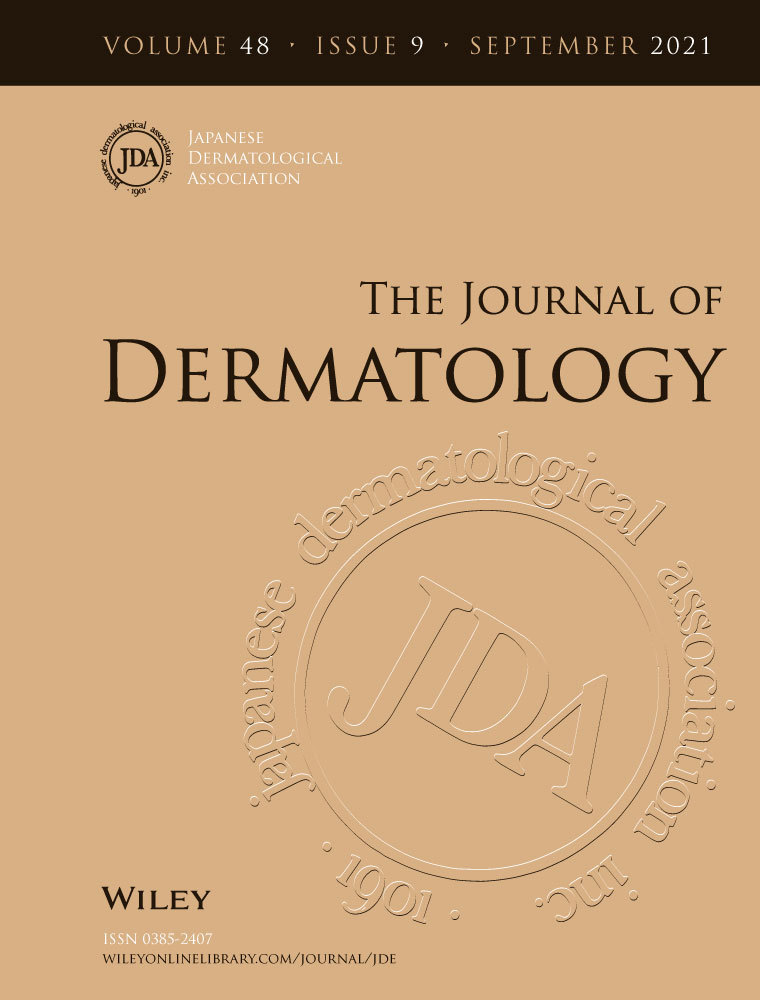BP230 IgE autoantibodies in topical-steroid-resistant bullous pemphigoid
Abstract
Background
IgE autoantibodies targeting BP230 can be identified in 38%–68% of bullous pemphigoid (BP) patients, yet the diagnostic and pathogenic value of anti-BP230 IgE still remains inconclusive.
Objective
We intend to investigate the clinical and immunological characteristics of anti-BP230 IgE in BP patients.
Methods and Results
Fifty-four BP patients were divided into two groups based on the responsiveness of a topical steroid. We investigated clinical features and IgE autoantibodies profiles by indirect immunofluorescence, ELISA and western blot between the two groups. BP disease area index (BPDAI) scores, total IgE, peripheral eosinophil counts, and anti-BP230 IgE level were significantly higher in the topical-steroid-resistant group. The majority of topical-steroid-resistant patients present with blister/erythematous phenotype (64.3%) and anti-BP230 IgE (59.5%), which correlates with total IgE levels. ELISAs of domain-specific BP230 recombinant proteins indicated that IgE in the topical-steroid-resistant group can react with all seven domains of BP230 and more frequently with the BP230-R1 epitope.
Conclusion
Anti-BP230 IgE is more frequently observed in topical-steroid-therapy-resistant patients and the prefers R1 domain of BP230, which is not included in commercially available testing kits. Our study further suggests the pathogenic role of anti-BP230 IgE in BP. Performing anti-BP230 IgE detection can serve as an indicator for initiating systemic steroid therapy.
CONFLICT OF INTEREST
None declared.




